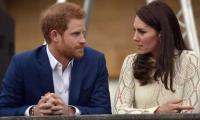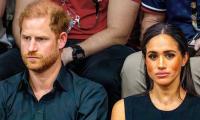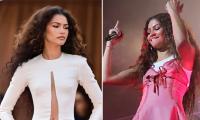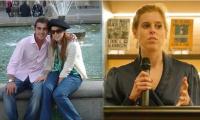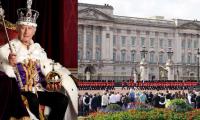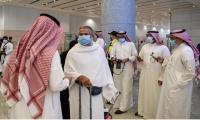DUBAI: The streets of Dubai may be known for architectural superlatives like Burj Khalifa, the highest of the world’s high-rises, and the Middle East’s largest shopping centre Dubai Mall. But a group of street artists now also wants to turn the concrete walls of a fastgrowing urban sprawl into an open-air museum that celebrates Emirati heritage and speaks to everyone in the multicultural city. From poetry painted in intricate Arabic calligraphy to a portrait of an old man rowing a wooden boat, the art of the government- funded Dubai Street Museum is bringing new life to the city. The project features the work of 16 mural and graffiti artists of different genres and nationalities, including four Emiratis. They include Malaysian-based Lithuanian artist Ernest Zacharevic -- who has been likened to British graffiti artist Banksy -- and Tunisian street artist The Inkman. Each brings their own interpretation of a curated theme -- "The Past" -- to the 2nd of December Street in the heart of Satwa, one of the older quarters of Dubai. "Dubai has everything, from finance to tourism," says project director Shaima Al-Soueidi. "Tourists can see our history at the museums. But we want everyone to be able to see that history everywhere, even in the streets." Urban art is a growing trend in the Middle East, a region dotted with cities carrying complex -- and frequently crisis-ridden -- histories. But while graffiti in older cities like Tunis and Beirut often acts as a form of resistance against contemporary politics, the art form takes on a more a conciliatory tone in Dubai. Satwa, originally home to Emirati bedouins, is today a working-class neighbourhood largely inhabited by labourers from the Philippines. Known locally as "mini Manila", Satwa is a bustling residential area dotted with late-night restaurants and shops selling everything from car parts to Chantilly lace. Satwa’s unique social makeup caught the eye of those behind the Dubai Street Museum, who hope to see the project spread further across the city. —AFP
Harvey Weinstein. — AFP FileNEW YORK: Harvey Weinstein’s 2020 conviction for sexual assault and rape was...
Liberal Justice Elena Kagan on Sept. 13, 2016. — Slate website WASHINGTON: U.S. Supreme Court justices, wading back...
A representational image of inmates behind jail bars. — Unsplash/FileMOSCOW: A Russian court on Wednesday ordered...
Sudanese soldiers guard the surrounding area of the UNMIS compound in El-Fasher, the administrative capital of North...
US quietly shipped ATACMS missiles to Ukraine. — Report news agencyWASHINGTON: The United States in recent weeks...
US President Joe Biden during his address in California. — AFP FileWASHINGTON: President Joe Biden signed a...
